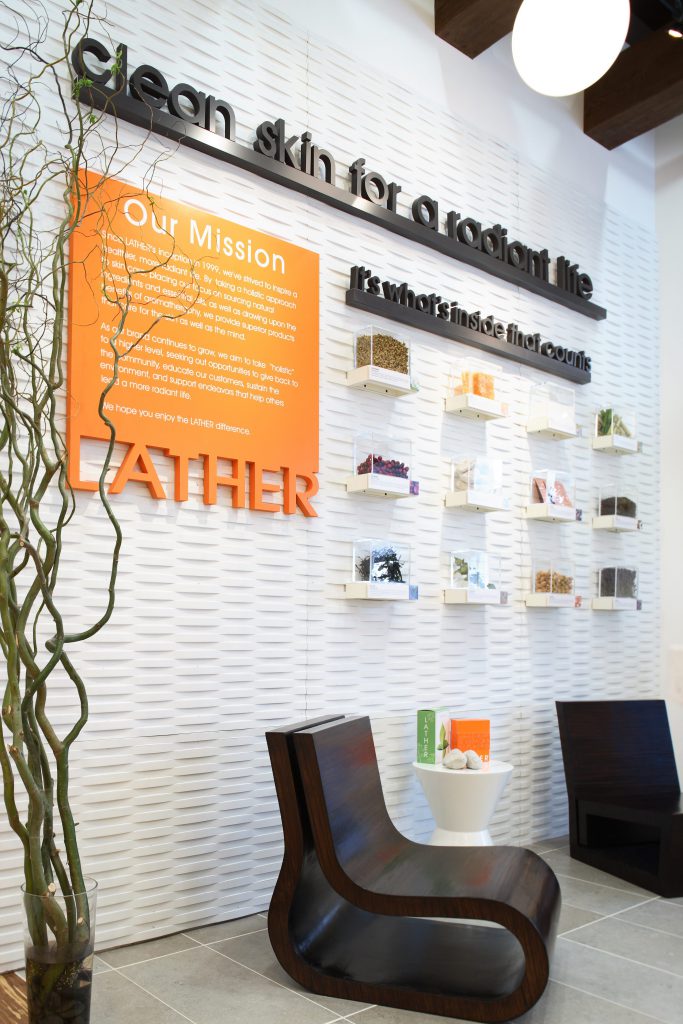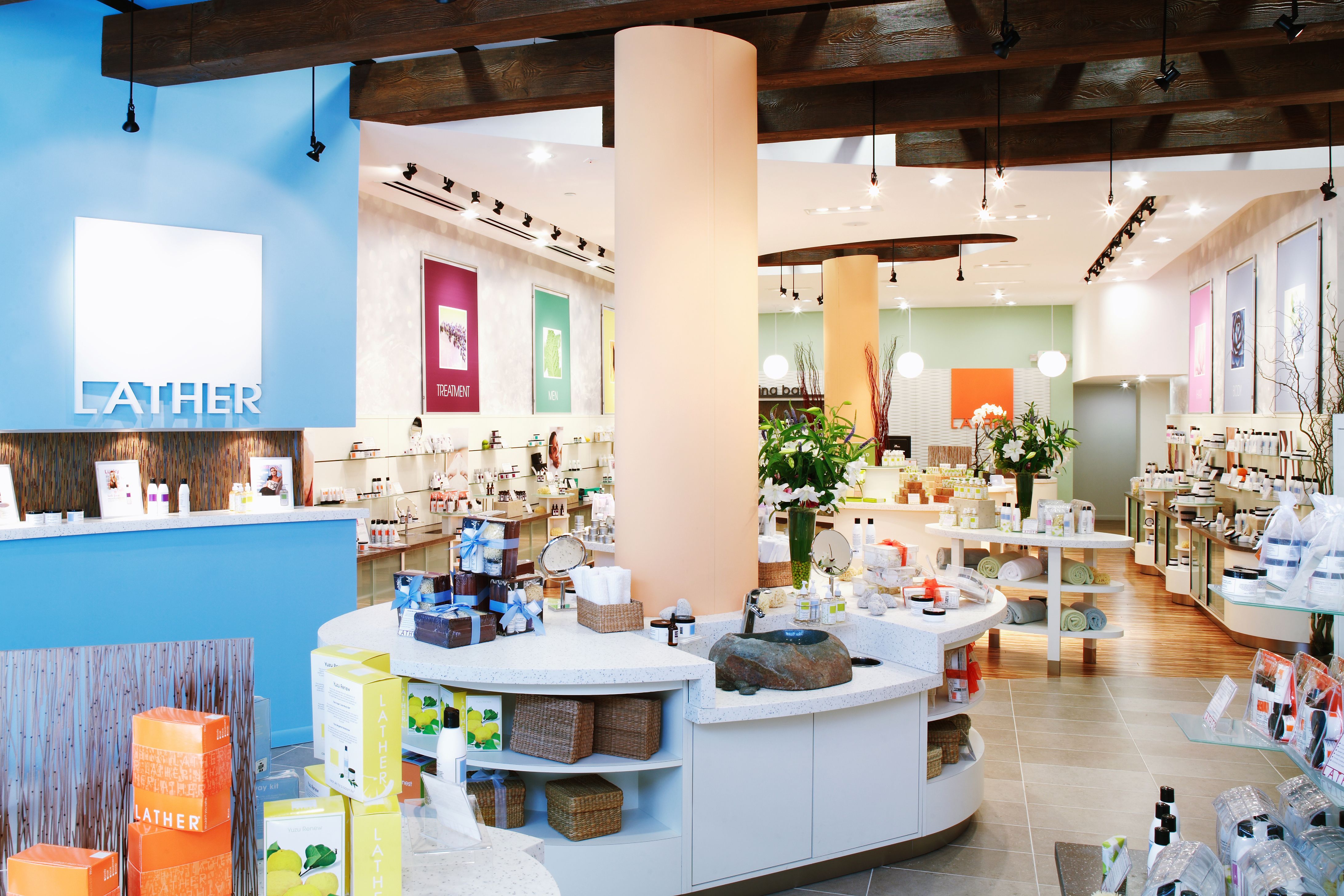 Scott Kohno, CEO of The Retail Element, has made a living out of analyzing the latest retail trends, deciding which ones can or should be applied to business and how. Michelle Hespe catches up with him to get some insight into the latest trends and how social media and technology are playing an increasingly larger part in staying “on-trend.”
Scott Kohno, CEO of The Retail Element, has made a living out of analyzing the latest retail trends, deciding which ones can or should be applied to business and how. Michelle Hespe catches up with him to get some insight into the latest trends and how social media and technology are playing an increasingly larger part in staying “on-trend.”
THE RETAIL PYRAMID
The Retail Element is an international consulting company focusing on retail growth strategies, branding and design. During Kohno’s tenure with this company and others of a similar ilk, he has been responsible for several million square feet of retail projects worldwide with such clients as Macy’s, Central Retail Group in Thailand, Shoemart in the Philippines and Tobu & Daimaru of Japan.
Scott Kohno also has the rare advantage of having been a tenant, landlord and an investor in retail, so he’s the perfect person to identify and discuss current retail trends that can make a difference to your company’s bottom line.
Kohno has developed a simple pyramid concept that presents the evolution of retail communication to retailers.
“Most retailers start at the bottom with a single channel of connecting with the customer, which is their physical retail store,” explains Kohno. “The next level of customer interaction is catalogs, direct mail and websites.”
The ultimate level, he explains, is the omni-channel marketing. “It’s the ability a retailer has to use all of these channels effectively, at the same time,” he says. “Very few retailers have been able to accomplish this, but soon it will be a requirement demanded by consumers worldwide.”
Scott Kohno does not think traditional advertising in retail will phase out, but he does feel that messaging and overall brand strategies will continually change.
“Advertising has the ability to reach customers on an emotional level as there is always the emotional side of the buying process that is extremely important,” he says. “But social media and peer recommendations can help sway the final decisions. In the end, the consumer will always respond to the emotional values of the brand.”
GET SOCIAL MEDIA SAVVY
Your business can benefit from a savvy social media campaign. And that no longer means just posting things on Facebook or tweeting on Twitter. It doesn’t have to cost a fortune, as it can be just a clever idea that people pass on to one another. Some of the big brands however, can afford to lay their money down and pave the way for other retailers when it comes to inspirational and innovative concepts. So keep in the loop with what they are up to.
Scott Kohno refers to Gatorade’s “War Room” as an example of how technology and social media is rapidly changing the world of retail, and how big brands are utilizing the data that they can collect from networking platforms. The Gatorade Mission Control Center inside its Chicago headquarters is a room in the middle of the marketing department where they can monitor the brand in real-time across social media outlets.
“What I like about the Gatorade War Room is Gatorade’s ongoing commitment to get closer and closer to the customer, and truly understand them at a real-time level,” Scott Kohno says. “Twenty years ago, a customer might fill out a customer survey which would be collected, processed and acted upon within a 6–12 month time frame. Today, customers know there is real-time data and expect results instantaneously. Also, in the past, consumers knew that the brand held all of the cards, but today consumers have the loudest voice in the history of marketing and brands are scrambling to adjust.”
Nine West (part of the Jones Group Inc.) is another global brand with an impressive history of staying close to its customers, listening and studying their needs to help strategize.
“They’ve used Postano (a U.S. company of creatives, developers and strategists working with innovative brands) and its social media tower to monitor consumer comments about the brand, carefully integrating these important messages into their e-commerce, social media and in-store marketing campaigns,” Kohno explains. “This real-time marketing adds a freshness to the store as new messages from fashion trends to customer comments truly provide customers with unique and proprietary Nine West messaging.”
As brands like this progress into monitoring consumers from afar, a scary thought for many people is that social media might lead to less and less contact between a customer and another human being on the shop floor, until there is no contact at all. But Kohno doesn’t think this will happen.
“At one point, computers were projected to replace factory workers, accountants, engineers, etc., but in reality we are a social society and human contact and ingenuity will always survive,” he says. “There is definitely a growing importance on human contact, however, customers are just picky on where and when they want it. After several decades, customers no longer need someone to fill their tank of gas, but they definitely need extra help to get advice on the best options to service their car. Today, personal shoppers are still alive and well, despite the success of on-line shopping.”
BRANDING & INFOGRAPHICS
“As retail consultants and designers, we used to be very careful not to over-design stores in moderate-income areas,” says Kohno. However, he explains that with the introduction of major international brands like Starbucks in every economic sector, customers are quite accustomed to and expect environments that project a nice lifestyle concept.
“Such concepts do not necessarily equate with things more expensive, and in the end they will always attract more people,” he says.

Interiors of the new Lather Store in Old Town Pasadena, CA.
Photo©DaleWilcox/DWP
What Scott Kohno is suggesting, is to be clever with your placement of infographics and sometimes go out on a limb with a design/décor idea that might attract customers into your store and to the counter. But plan your venture well.
“Informational graphics, if not used in a proper scale, can definitely backfire for retailers though,” warns Scott Kohno. “I have seen retailers that try to shout information to their customers at every turn, and this is truly offensive. In-store graphics need to be carefully thought out and planned. There are times during the shopping experience that a retailer needs to shout their image, and there are times when a whisper is all a customer needs to pick that nail polish up and try it out.”
LIGHTS, TECHNOLOGY, INTERACTION
Countless progressive companies go wild with modern lighting, but even stores attracting customers with a beautiful, homely feel and what seems like “old-fashioned” lighting are adopting new trends.
“There is no question that the advancement of LED (Light Emitting Diode) technology has changed the landscape of retail lighting,” says Kohno. “The energy efficiency, small packaging and unique colors of LED technology have given designers an entire new world of merchandise lighting.”
Kohno’s company is currently working with a new food concept that has very tight constraints, and the LED color-corrected lighting is crucial to the project’s success. “It gives us the ability to truly ‘pop’ the fresh food ingredients in a way that we could never have achieved with conventional lighting,” he explains.
In-store technology is another trend worth looking into, especially if your store is aimed at the younger generation, who confidently play with whatever form of technology is placed in front of them.
“The technology interaction opportunities in a retail environment will only appeal to certain individuals at certain times,” says Kohno. “The key is that retailers need to provide multiple opportunities to interact with the brand. A good example is banking. Today, a strong majority of customers are very comfortable with interacting with online banking and automated teller machines. However, there are always times that human interaction is required. I personally remember ordering a customized pair of Nike shoes in Tokyo, and if the opportunity presented itself, I would be open to doing it again. I don’t think that this technology is mutually exclusive.”
Once upon a time, it was all about packing as many products as you could on to a shop floor to sell, but today, interaction is becomingly increasingly important. Shopping is now a social experience, and it can even be aligned to an experience such as theatre, as more and more retailers offer cooking demonstrations, and the chance to meet celebrities or experts showing off products.
“Interaction, in the form of classes and theatre, etc. has always been an important element in retail, from the earliest street vendors barking out hilarious jokes to the elaborate Bloomingdale model rooms and international exhibitions,” says Scott Kohno. “But somewhere along the way, as retailers started to over-analyze the margins per square foot, the retail floor became more and more dense with only products. Today, shopping is definitely a social experience, and the good news is that the more forward-thinking retailers have re-acknowledged this fact and are devoting more floor space to such customer interaction opportunities.”
As more and more customers get out there and enjoy the host of new retail trends emerging, make sure your store is taking on the ones that suit your brand and will ultimately help you to develop as a company, retain your loyal customers, and attract new ones. After all, that’s still the name of the game.
To learn more about The Retail Element, visit www.retailelement.com



